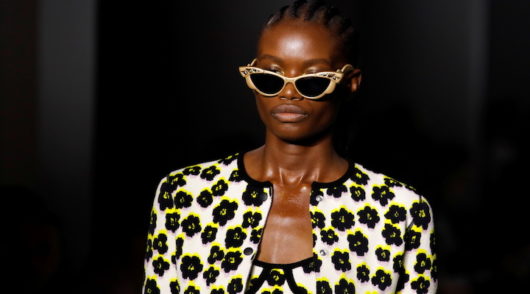Strong growth in sportswear sales helped Belle International achieve an 8.7 per cent increase in revenue in the year to February, despite a challenging greater China retail market.
Belle International manufactures, distributes and retails shoes and footwear products and sells sportswear and other apparel, mainly in China, Hong Kong and Macau.
It owns footwear brands Belle, Teenmix, Tata, Staccato, Senda, Basto, Joy & Peace, Millie’s, Skap, :15Mins, Jipi Japa and Mirabell. And it distributes Bata, Clarks, Hush Puppies, Mephisto, Merrell and Caterpillar, amongst others.
Total revenue was RMB 40 billion (US$6.45 billion) for the year ended February 28.
Revenue from the footwear business increased by 3.2 per cent, while the sportswear and apparel business sales increased by 17.2 per cent.
Belle International says the relatively fast growth of the sportswear and apparel business was mainly due to the relatively higher same store sales growth.
Operating profit increased by 9.3 per cent to RMB6.193 billion.
In a statement, Belle said footwear sales declined by four per cent on a same stores basis, and the company had adopted a cautious approach to new store openings.
“Such a decline was slightly narrower than the overall sales decline in the footwear departments across over 2000 department stores according to data collected by the group. [Our] combined market share of the footwear brands was slightly up. Within same store sales, average selling price was up slightly and volume was down.”
In the full year Belle added 876 net additions to its footwear store network, representing a net increase of 6.6 per cent year on year.
“Under the current economic backdrop most channel operators are very cautious. As such the group expects very limited additions to the footwear retail network in the near future.”
In the sportswear and apparel business, same store sales growth exceeded 10 per cent. The average selling price increased by low single digit, mostly as a result of the normalisation of retail markdowns.
The company added a net 504 stores to its apparel and sportswear network, representing a net increase of 8.5 per cent.
“The pace of network expansion in the sportswear and apparel business was slightly faster than that of the footwear business mainly due to two reasons. First, the sportswear and apparel business has a relatively diversified channel model, which enables more flexibility in opening new stores. The footwear business, on the other hand, is more reliant on the department store channel. Second, the fashion apparel business of Baroque China was growing at a relatively fast clip. Overall, in the near future the pace of new store opening will be relatively slow for the sportswear and apparel business, reflecting a cautious outlook in the channels and the prevailing environment.”
Belle International says during the next three to five years the group will continue to focus on the retail of footwear and sportswear products.
“From a longer term strategic perspective, the group has made a decision to enter the fashion apparel category and is in the process of cultivating relevant skills and talent in this field. Such a strategy, different from one that pursues unrelated diversification, is based on the following considerations. First, the fashion apparel business is closely related to the fashion footwear business due to overlap in the customer base as well as synergies in network expansion and retail management. Second, fashion apparel, especially the trendy lines, being on the cutting edge of world fashion, will help us get a better understanding of fashion trends and consumer preferences. Third, the retail format in developed markets is usually centered around a specialty brand, covering multiple product categories. Active penetration into the fashion apparel category will enable us to experiment and explore future retail formats.”
The group has been partnering with Baroque to develop the China business together for just over one year, with promising progress and results. On the one hand, business development into new regions. Before the partnership with the Group, Baroque China was only operating retail stores in tier one cities such as Beijing and Shanghai because it did not possess enough retail management resources to support cross-region development on a national scale.
“With a strong retail platform nationwide we have been able to provide strong support for Baroque in its channel development efforts. Since 2014 Baroque methodically entered new markets including Shenzhen, Wuhan, Chengdu, Hangzhou and Changsha, with a well defined plan to further penetrate second tier cities. On the other hand, improvement in managerial efficiencies. Before the partnership with the Group, Baroque was losing money in China due to limited scale and relative high cost. With the support of the highly efficient back office, Baroque not only achieved faster network expansion but also managed to improvement the quality of operations, resulting in higher gross profit margins while keeping expenses in control. In 2014 Baroque was breaking even in its China business.”
In the near term, the Group will continue to actively develop the Baroque China business, increasing market penetration of existing brands including Moussy and Sly, while actively considering introduce new brands under the Baroque portfolio that are successful in the Japan market.
“On the business back end [our] priorities are cultivating a localised team capable of product assortment and product design, improving the supply chain model aimed at reducing cost and increasing flexibility and responsiveness.”






